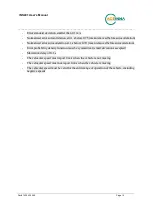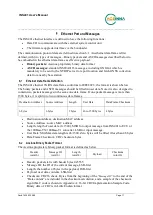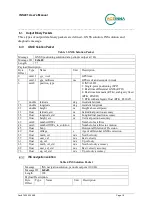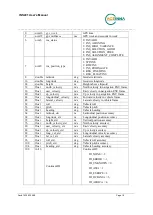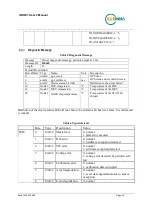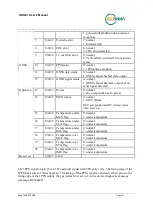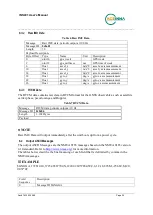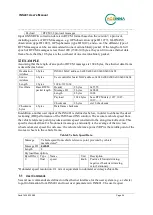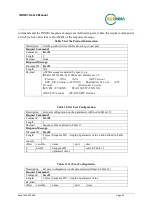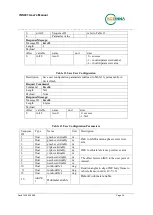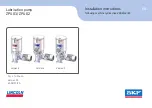
INS401 User’s Manual
_____________________________________________________________________________________
Doc# 7430-3305-08
Page 11
INS401 Operation
The following equipment and items are needed for a testing setup of the INS401 to demo its
operation:
Active multi-constellation multi-band GNSS antenna
12 V power adapter (battery)
100Base-TX (RJ-45 connector) to 100Base-T1 converter
Testing PC (Windows 10 or Ubuntu 18.04) with internet access
External harness with MX23A automotive connector and cables
GNSS RTK correction service account (NTRIP protocol settings)
Setting Up Communications
A typical configuration of the INS401 is shown in Figure 6. The circular RF connector connects
with an active GNSS antenna, and the main MX23A connector contains the connection with the
external power, the ethernet data cable and the other communication port cable if needed. The
primary data port is the automotive grade ethernet port to connect to a vehicle ECU directly or to
a testing computer via a converter. The connection to a vehicle ECU is described in the next
subchapter for system integration. Figure 6 shows a test setup only with a testing PC, which
requires a key unit and the 100Base-TX (with RJ-45 connector) to 100Base-T1 converter, to
connect an automotive-grade ethernet device with an industrial ethernet device typically seen on
a computer.
Figure 6 Typical INS401 Configuration
NOTE
INS401 does not support power over ethernet.
When ordering the INS401, only the physical module with its integrated connectors is included.
The other components shown in Figure 6 (antenna, cables, mating connectors etc.) must be
purchased separately (INS401 EVK will be available Q1-2022 which include: INS401, antenna,
cables, mating connectors etc.).
System Operation and Data Logging
On the testing computer, only the “AceNav” Command Line Interface (CLI) software, is needed
for the INS401 system to work and to log all the data output from the INS401 system. This CLI

















